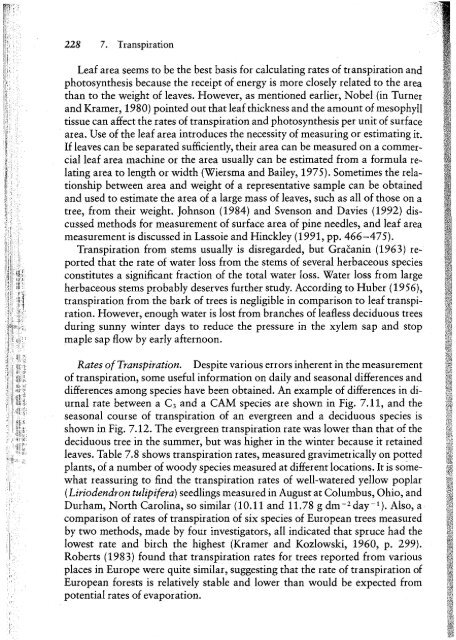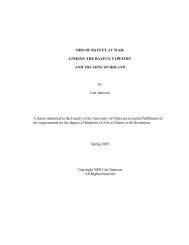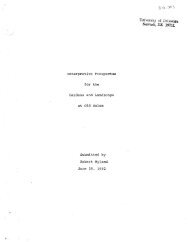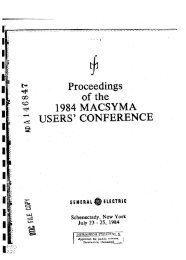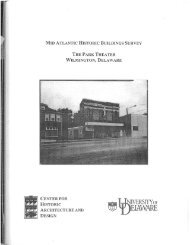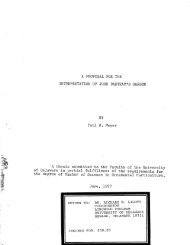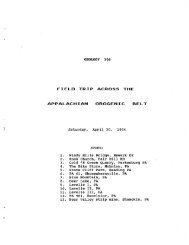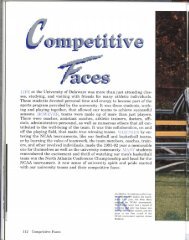Transpiration and the Ascent
Transpiration and the Ascent
Transpiration and the Ascent
You also want an ePaper? Increase the reach of your titles
YUMPU automatically turns print PDFs into web optimized ePapers that Google loves.
228 7. <strong>Transpiration</strong><br />
Leaf area seems to be <strong>the</strong> best basis for calculating rates of transpiration <strong>and</strong><br />
photosyn<strong>the</strong>sis because <strong>the</strong> receipt of energy is more closely related to <strong>the</strong> area<br />
than to <strong>the</strong> weight of leaves. However, as mentioned earlier, Nobel (in Turner<br />
<strong>and</strong> Kramer, 1980) pointed out that leaf thickness <strong>and</strong> <strong>the</strong> amount of mesophyll<br />
tissue can affect <strong>the</strong> rates of transpiration <strong>and</strong> photosyn<strong>the</strong>sis per unit of surface<br />
area. Use of <strong>the</strong> leaf area introduces <strong>the</strong> necessity of measuring or estimating it.<br />
If leaves can be separated sufficiently, <strong>the</strong>ir area can be measured on a commercialleaf<br />
area machine or <strong>the</strong> area usually can be estimated from a formula relating<br />
area to length or width (Wiersma <strong>and</strong> Bailey, 1975). Sometimes <strong>the</strong> relationship<br />
between area <strong>and</strong> weight of a representative sample can be obtained<br />
<strong>and</strong> used to estimate <strong>the</strong> area of a large mass of leaves, such as all of those on a<br />
tree, from <strong>the</strong>ir weight. Johnson (1984) <strong>and</strong> Svenson <strong>and</strong> Davies (1992) discussed<br />
methods for measurement of surface area of pine needles, <strong>and</strong> leaf area<br />
measurement is discussed in Lassoie <strong>and</strong> Hinckley (1991, pp. 466-475).<br />
<strong>Transpiration</strong> from stems usually is disregarded, but Gracanin (1963) reported<br />
that <strong>the</strong> rate of water loss from <strong>the</strong> stems of several herbaceous species<br />
constitutes a significant fraction of <strong>the</strong> total water loss. Water loss from large<br />
herbaceous stems probably deserves fur<strong>the</strong>r study. According to Huber (1956),<br />
transpiration from <strong>the</strong> bark of trees is negligible in comparison to leaf transpiration.<br />
However, enough water is lost from branches of leafless deciduous trees<br />
during sunny winter days to reduce <strong>the</strong> pressure in <strong>the</strong> xylem sap <strong>and</strong> stop<br />
maple sap flow by early afternoon.<br />
Rates 01 <strong>Transpiration</strong>. Despite various errors inherent in <strong>the</strong> measurement<br />
of transpiration, some useful information on daily <strong>and</strong> seasonal differences <strong>and</strong><br />
differences among species have been obtained. An example of differences in diurnal<br />
rate between a C3 <strong>and</strong> a CAM species are shown in Fig. 7.11, <strong>and</strong> <strong>the</strong><br />
seasonal course of transpiration of an evergreen <strong>and</strong> a deciduous species is<br />
shown in Fig. 7.12. The evergreen transpiration rate was lower than that of <strong>the</strong><br />
deciduous tree in <strong>the</strong> summer, but was higher in <strong>the</strong> winter because it retained<br />
leaves. Table 7.8 shows transpiration rates, measured gravimetrically on potted<br />
plants, of a number of woody species measured at different locations. It is somewhat<br />
reassuring to find <strong>the</strong> transpiration rates of well-watered yellow poplar<br />
(Liriodendron tulipifera) seedlings measured in August at Columbus, Ohio, <strong>and</strong><br />
Durham, North Carolina, so similar (10.11 <strong>and</strong> 11.78 g dm- 2day-l). Also, a<br />
comparison of rates of transpiration of six species of European trees measured<br />
by two methods, made by four investigators, all indicated that spruce had <strong>the</strong><br />
lowest rate <strong>and</strong> birch <strong>the</strong> highest (Kramer <strong>and</strong> Kozlowski, 1960, p. 299).<br />
Roberts (1983) found that transpiration rates for trees reported from various<br />
places in Europe were quite similar, suggesting that <strong>the</strong> rate of transpiration of<br />
European forests is relatively stable <strong>and</strong> lower than would be expected from<br />
potential rates of evaporation.


